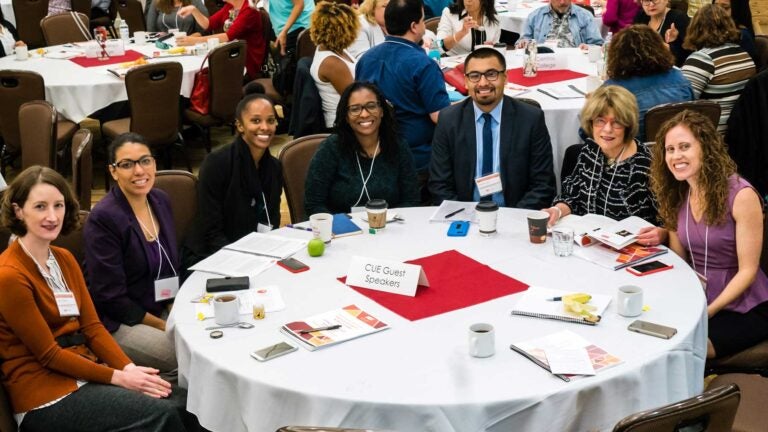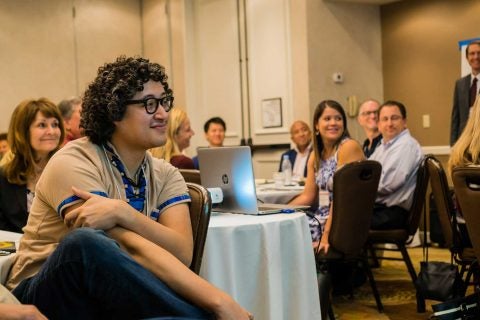
How can California’s community colleges increase faculty diversity?
In event at USC’s Center for Urban Education, representatives of schools around the state discuss the challenges they face.
As college enrollments become more diverse, faculty diversity continues to lag behind. In the California Community Colleges system, for example, Latinos and Latinas make up 45 percent of the student population, but only 15 percent of the full-time faculty. Sixty percent of the state’s community college faculty members are white, though only 26 percent of community college students are.
The urgency to confront these and other inequities in California’s community colleges is clear, experts say, given research showing that students of color experience better academic outcomes when taught by faculty of color — and that the California Community Colleges system, the largest system of higher education in the nation, intends to hire an unprecedented number of faculty members in the next two academic years.

To address these concerns, USC’s Center for Urban Education, which conducts research and develops tools to promote racial equity in student outcomes at institutions of higher education, convened representatives from 20 community colleges around the state for the first Institute for Equity in Faculty Hiring at Community Colleges. Held in Los Angeles this fall, the institute offered attendees practical assistance in developing a set of practices and processes to embed equity into their campuses’ faculty hiring procedures.
Center Director Estela Bensimon noted that the vast interest in the institute — 14 campuses were on the waiting list after the enrollment capacity was reached — illustrates the hunger for the type of information provided by the center. In a survey of participants taken prior to the institute, 84 percent of respondents said their college faces challenges when hiring faculty of color.
“The biggest takeaway from our institute is that when campus leaders, faculty and human resources professionals are provided with practical tools, they are able to see that embedding racial equity into the hiring process is attainable,” Bensimon said. She added that “too often leaders and faculty claim the desire for more diverse candidates but fail to fulfill it because they are unable to understand the myriad ways in which their hiring routines reproduce the status quo.”
Supporting the students
Bensimon made clear that increasing racial representation in the faculty is imperative but insufficient. Candidates must also demonstrate equity-minded competence in order to create classroom cultures that support the success of the Latino/a, black, Native American and marginalized Asian-American communities.
When campus leaders, faculty and human resources professionals are provided with practical tools, they are able to see that embedding racial equity into the hiring process is attainable.
Estela Bensimon
In one session, participants were led through an analysis of the language in their job announcements, examining factors such as whether the announcements highlighted the importance of experience teaching first-generation African-American and Latino college students. Another session included a video presentation on how implicit bias can hinder efforts to recruit and hire diverse faculty, along with steps that faculty, staff and administrators can take to change the process.
The institute also provided a platform for participants to engage in candid conversations about the challenges and opportunities that exist around diverse faculty recruitment, hiring and retention in the California Community College system.
Key speakers
In addition to sessions designed to provide practical tools, the institute featured keynote speakers Eloy Ortiz Oakley, California Community Colleges chancellor, and Michele Siqueiros, president of The Campaign for College Opportunity.
In his first year as chancellor, Oakley has led the creation of a strategic plan, “Vision for Success: Strengthening the California Community Colleges to Meet California’s Needs,” that calls for eliminating equity gaps within the next 10 years, in part through the hiring of more diverse and equity-minded faculty.
Oakley spoke of the opportunity of California’s colleges to lead the nation on the issue. But, he added, “the situation is not going to improve until we are intentional, persistent and consistent. We are only going to achieve closing the equity gap by completely rethinking how we do business — including how we recruit, hire and retain the employees who are going to make the biggest difference.”
